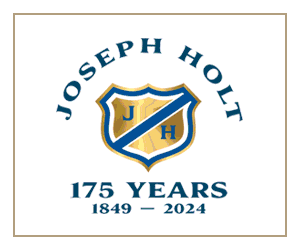THE albino mole is a casualty of history. I Googled in vain to retrace a way back to that little white taxidermist’s triumph in its case with yellowing label marked ‘Taupe Albino’ in La Rochelle’s Musée de la Feuille. Of this dusty collection of nature’s serendipity in an 18th century mansion there is no record. Long shut, no doubt.
Perfect for working up an appetite for a dozen oysters on the front
Go to La Rochelle now in search of it, as we did so sentimentally, and they’ll shrug and direct you to the stupendous ultra-modern Aquarium, part of a substantial development alongside the Marina or the Musée des Automates and adjoining Musée des Modeles Reduits, covering mechanical puppets and scale models (we’ll leave those for the kids and geeks).
But plus ça change etc. So much of France’s most attractive, unspoilt port is just as it was on that first visit decades ago – the arcaded streets, the turrets guarding the entrance to the harbour, the chance to eat some of the finest seafood going while watching boats bobbing at anchor. Above all the light, the shifting clouds coming in off the Atlantic.

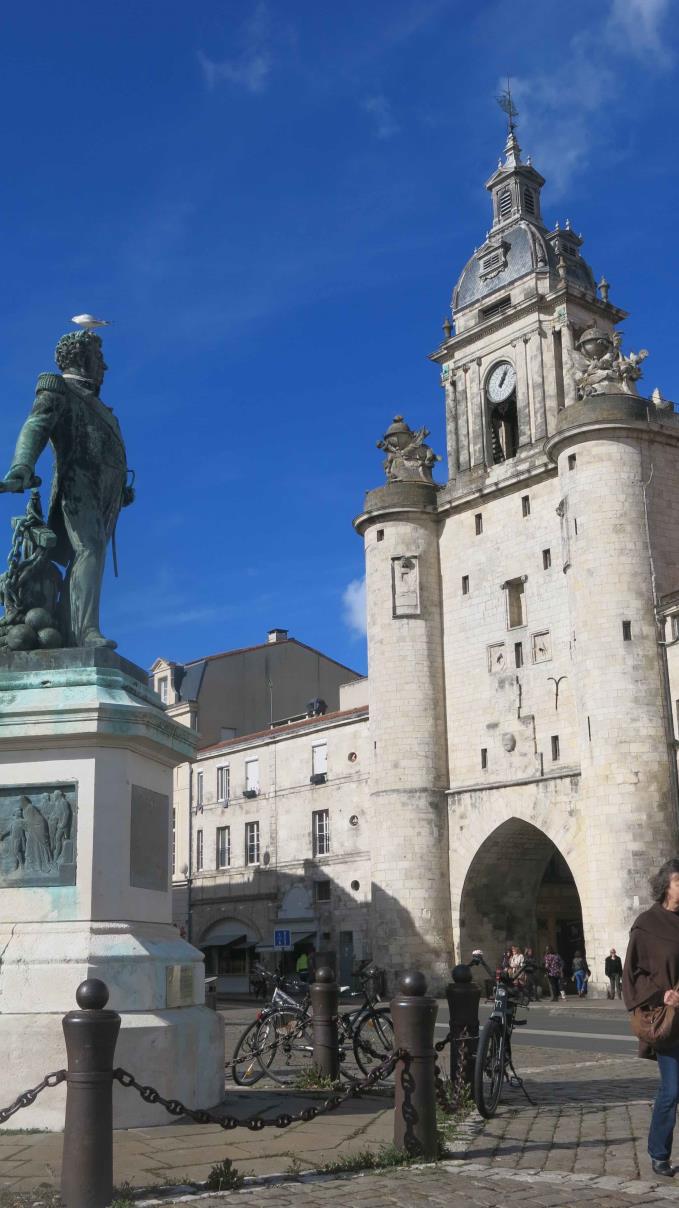
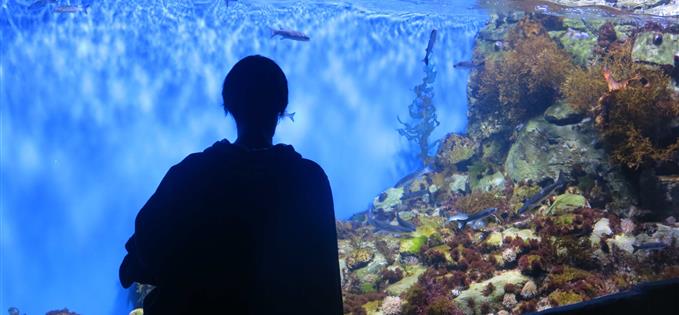 Watching fishes go by at the astounding Aquarium La Rochelle, below
Watching fishes go by at the astounding Aquarium La Rochelle, belowSo many of its denizens and other exotic species from more distant oceans are represented in the Aquarium La Rochelle. One of Europe’s largest, and privately owned, it attracts 800,000 visitors a year; new for them in 2016 was the Gallery of Lights, an ‘immersion’ in the various forms of underwater light (fluorescence, luminescence, bioluminescence an iridescence) accompanying your two hour exploration of the world of the 12,000 resident marine animals on show.
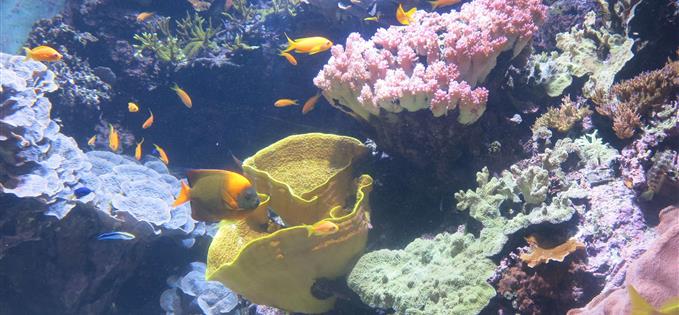
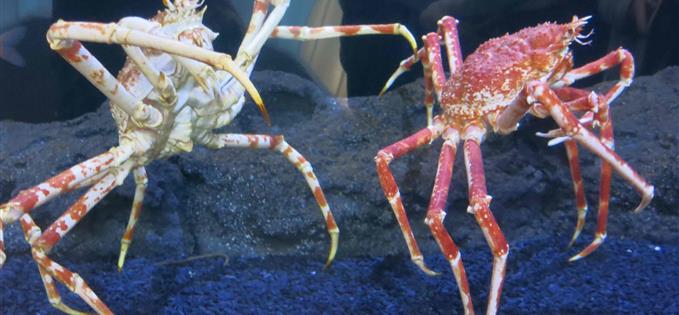
I’ve been to so many aquariums around the world (Monterey in California the pick) I’m rather blasé about them, but this blew my senses. And this is from someone whose aim on this road trip along the Charente-Maritime coastline in Western France was to meet fish mostly on a plate. Still the restaurants didn’t disappoint either.
 Le Bar Andre will shiver your timbers with its seafood platters
Le Bar Andre will shiver your timbers with its seafood plattersLe Bar André in the rue St-Jean du Pérot is the epitome of a French seafood eaterie, from the oyster bar outside to the warren of nautically themed dining rooms inside, heaving platters being shouldered to the table. The nearby Les 4 Sergents is more formal, serving a traditional, regional cuisine. The quartet of soldiers in the title became liberal heroes after being guillotined in Paris in1822 for plotting to overthrow the restored Bourbon monarchy. Each has a menu named after him.
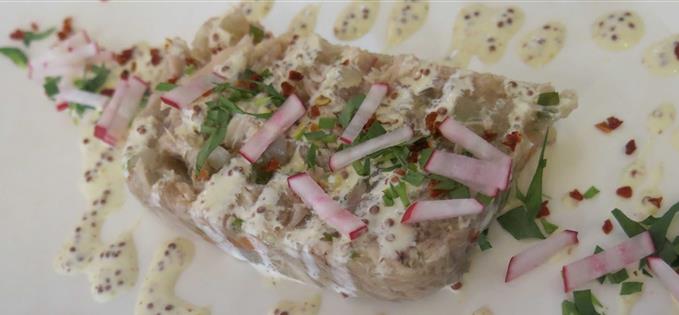 Rabbit terrine at Le Boute en Train, next to La Rochelle Market
Rabbit terrine at Le Boute en Train, next to La Rochelle MarketOur favourite restaurant in La Rochelle was much more unassuming – Le Boute en Train, tucked away behind the lovely Market Hall but much more chic than its usual cluster of bars and bistros. A carafe of aromatic Quincy white washed down a rabbit terrine (above) and a gloriously sauced piece of hake.
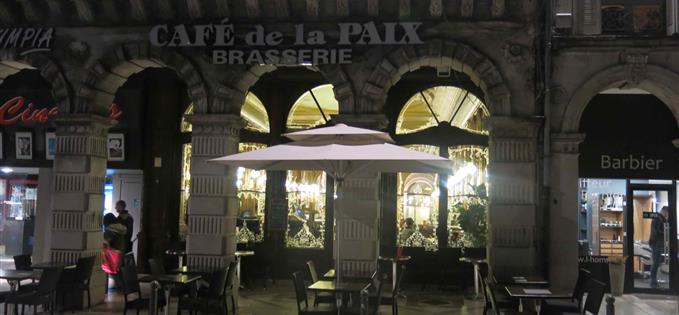 Cafe de la Paix
Cafe de la PaixDrink stop-offs in our rewarding ambles around the pedestrian-friendly central were (for coffee) the Café de la Paix, a fin de siecle flavoured historic monument on the attractive Rue Chaudier and (for craft beer) le hoppy hipster haunt de la ville, the Bar Toublon, at 8 Rue de la Fert, where we sipped a beer from Alsace brewed in tribute to Bob Dylan and nibbled on artisanal bar snacks before an atmospheric late night ramble back to our hotel.
 Our bedroom in the Champlain. Ask for a period room; it has a modern annexe
Our bedroom in the Champlain. Ask for a period room; it has a modern annexeEven so, and despite the cosy period charm of the Hotel Champlain, we regretted not having cooking facilities to take advantage of the superb produce on the market. And our knowledgeable guide, Francoise, introduced us to a wealth of local specialities never previously on our radar – Farci Charentaise, anyone? ( a herby stuffing of spinach, leeks, sorrel, cabbage and and spices); Sanguine de Mer (oyster leaf, apparently found in Scotland too, its fleshy leaves taste of oysters, anchovies and mushrooms); Mogettes de Vendee (creamy lingot beans, almost rectangular in shape, perfect for cassoulet); while from Aquitaine the Perlita Caviar was exquisitely Beluga-like, salty and creamy.
 La Rochelle Market and surrounding streets are full of amazing raw materials, below
La Rochelle Market and surrounding streets are full of amazing raw materials, below 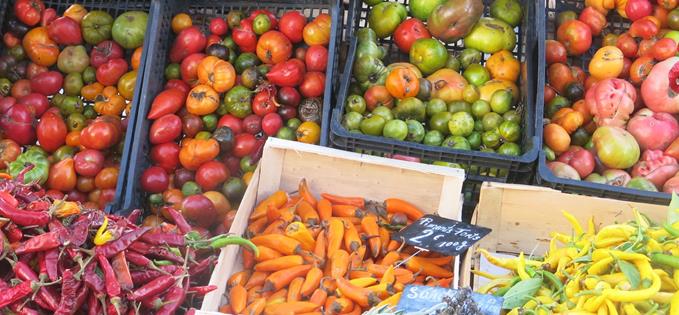
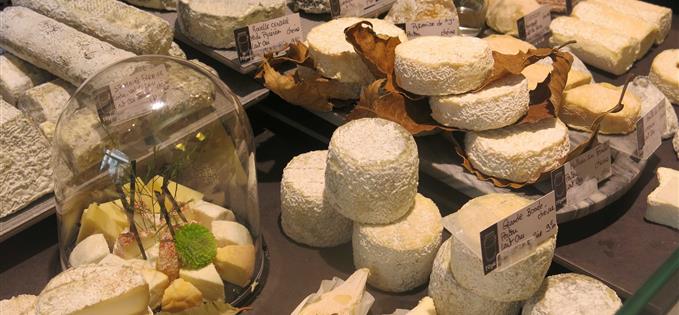
Amid all these discoveries (local saffron also featured) I was most intrigued by Jonchée, a Charente-Maritime speciality dating back to the Middle Ages. This little fromage frais-style cheese is made of curds from cow's, ewe's or goat's milk, then stuck in a bulrush cylinder. The curds are made by squeezing and, traditionally, using wild artichoke flower, then seasoned with bay leaf water. It’s a very niche dessert, sweetened and often laced with Pineau des Charentes.
This powerful aperitif again is hardly a household name outside the Cognac region. It is a fortified wine made from either fresh, unfermented grape juice or a blend of lightly fermented grape, to which a Cognac eau-de-vie is added before maturation.
 The showpiece Chateau de Beaulon makes one of ther best Pineau des Charentes around
The showpiece Chateau de Beaulon makes one of ther best Pineau des Charentes aroundOne of the best examples is made at the beautiful Chateau de Beaulon, to the south of Royan (itself 75 km south of La Rochelle). Built in 1480, its main business is ultra-traditional brandy production. A historical monument, it is worth visiting for its gardens alone.
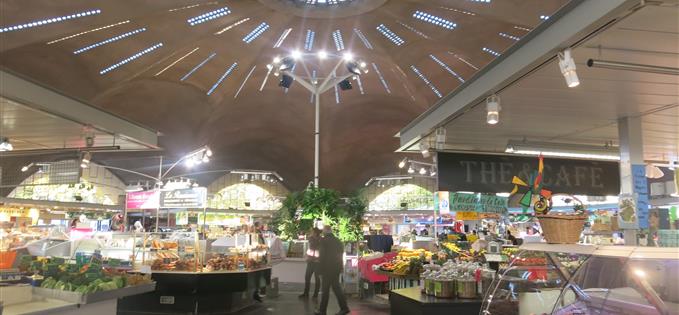 Royan Market boasts award-winning fifties architecture and further fabulous produce
Royan Market boasts award-winning fifties architecture and further fabulous produce 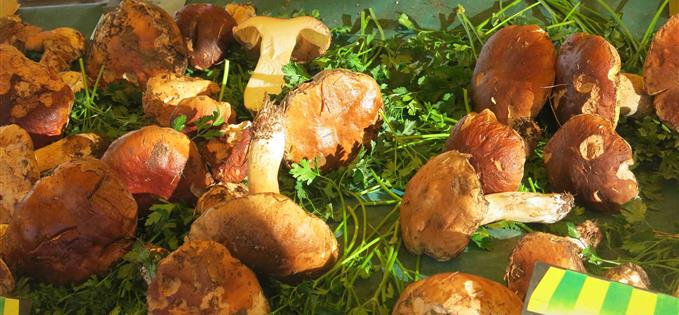
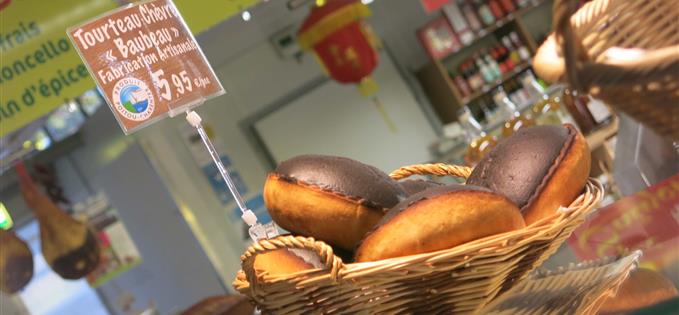
We tasted more rustic versions of Pineau at Royan’s Market. Midweek, the Halles Centrales was quiet but still boasted a range of produce that would put any British equivalent to shame. Circular with no internal pillar supports, it’s made out concrete like most of the reconstructed town, heavily bombed by the Allies during the war.
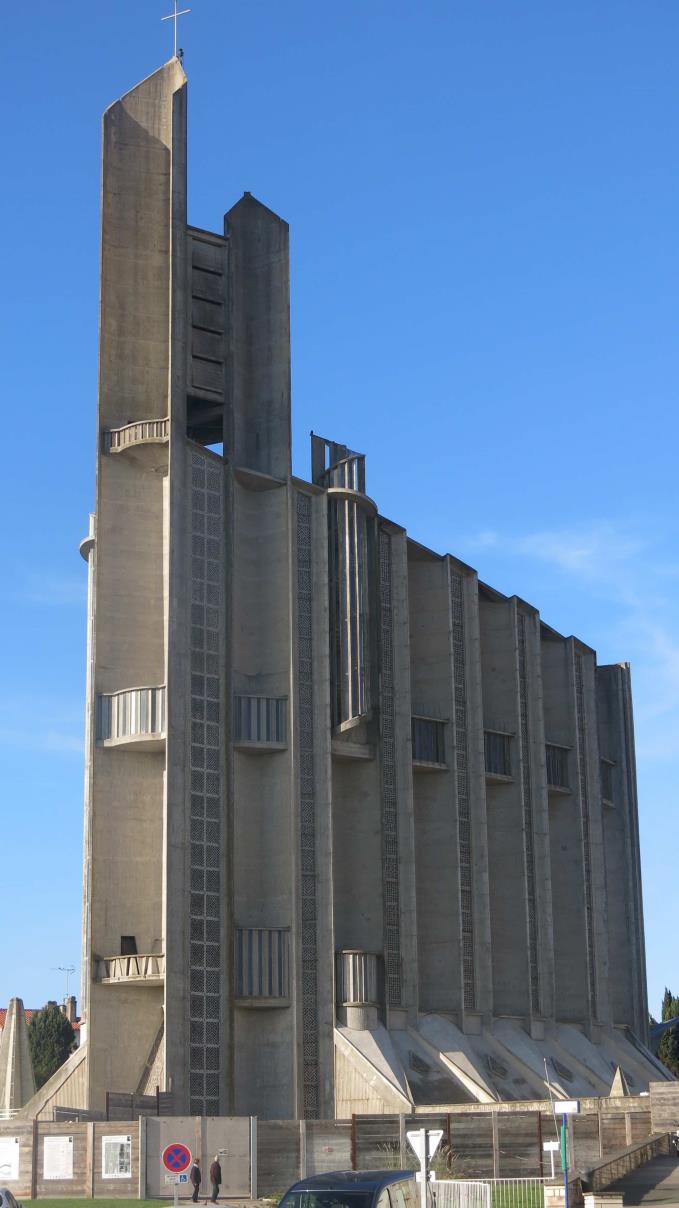
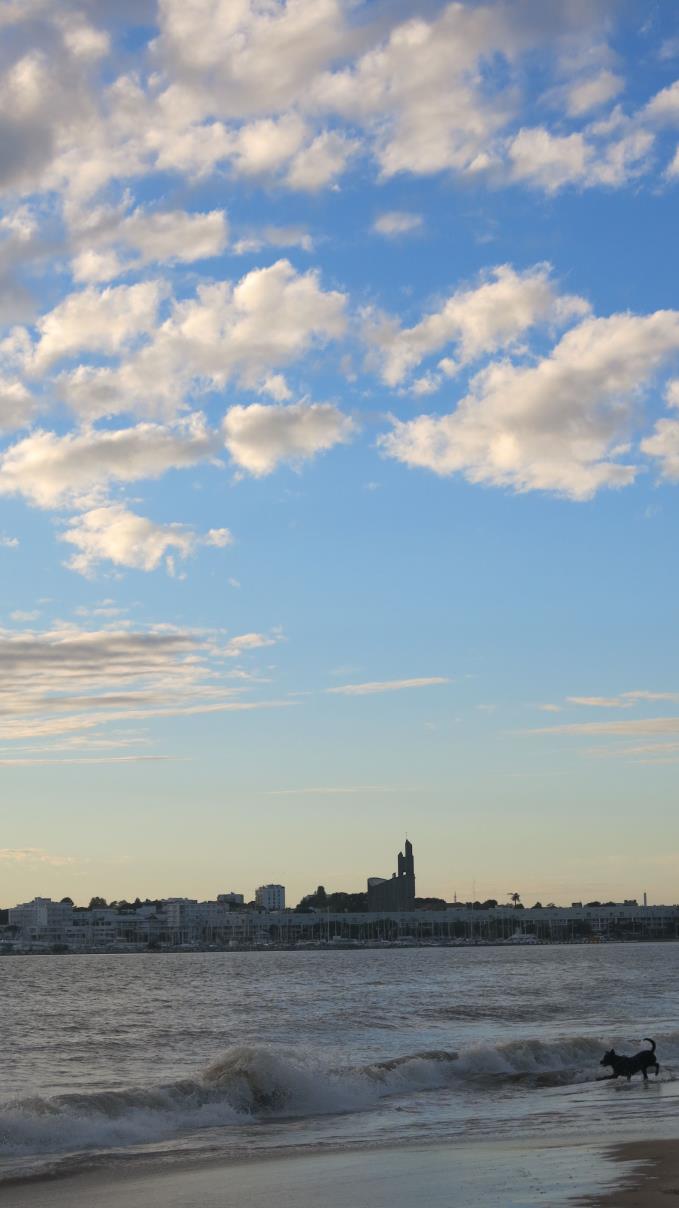
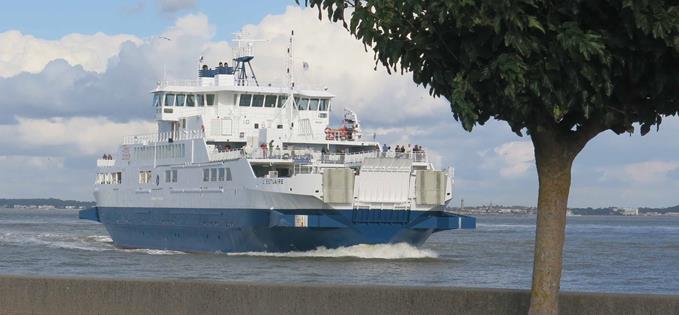 Ferry across the Gironde from Souillac to Royan, the perfect approach
Ferry across the Gironde from Souillac to Royan, the perfect approach Also dating back to the 1950s, the church of Notre Dame, a dramatic landmark from way out at sea, its bell tower like the prow of a ship. It was an immense presence throughout our car ferry ride across the Gironde estuary from Souillac on the Medoc peninsula – the perfect approach to Royan, especially against the backdrop of a spectacular Atlantic sunset. Alas, close up to the great church you see the damage done by such ocean exposure. It’s closed for the foreseeable future for life-saving repairs.
 The Trident Thyrse – the fifties live on in this Royan seafront hotel
The Trident Thyrse – the fifties live on in this Royan seafront hotel 
We were staying in our own modern period gem right on the seafront, the Trident Thyrsé. Just 15 rooms and two stars but the chic name is a giveaway – a tribute to Poseidon and Dionysus. A post-war hotel fantasy that went to seed, it was rescued by the next generation in 1995, who have retained, nay enhanced, the fifties retro look.
Despite all the concrete, Royan maintains its breezy resort feel, thanks to a consistently balmy climate and five fine sandy beaches. You can walk for miles, perfect for working up an appetite for a dozen oysters on the front.
Ah, those precious bivalves that are such a staple all up and down this coast. In the Marenne-Oléron area alone annual production can run to 60,000 tons. We drove the 50km north from Royan to the Ile d’Oléron to visit one of its 30 oyster farmers, run by a driven Dutchman called Nicolas Werkhoven.
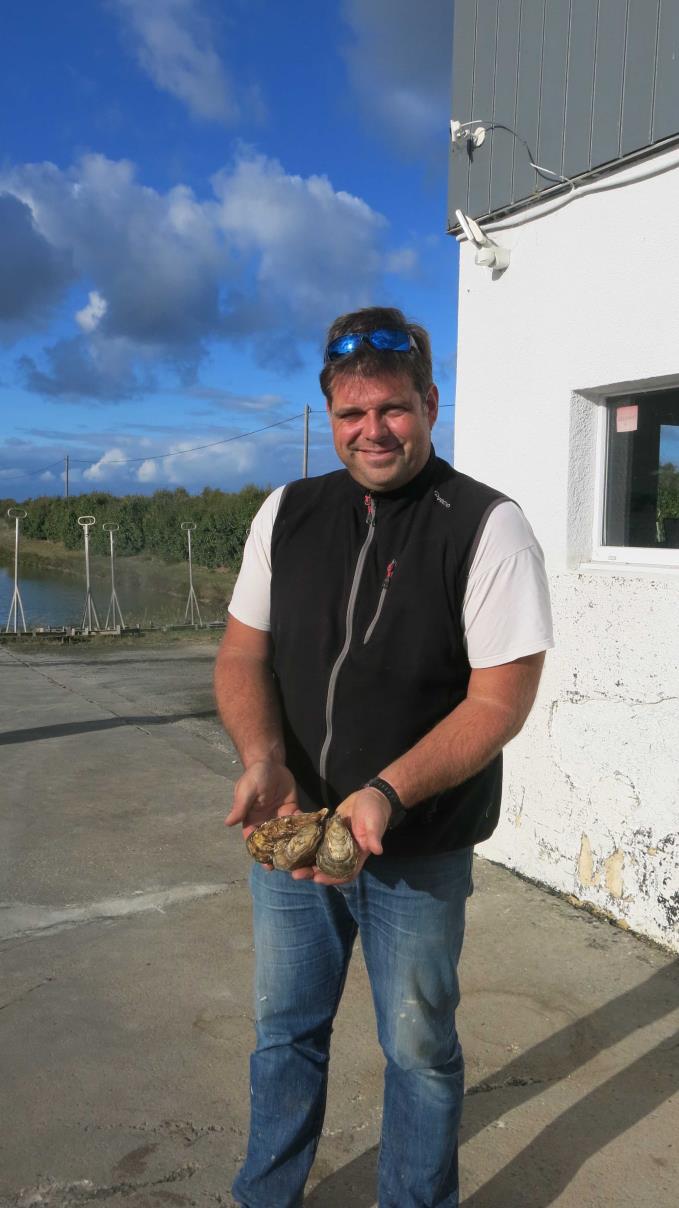 Nicolas Werkhoven devotes his life to creating the freshest cleanest oysters
Nicolas Werkhoven devotes his life to creating the freshest cleanest oystersHuitres de Fonteneau, his state of the art operation is on the east side of this flat island, France’s largest after Corsica and reached by a 3km bridge. En route check out to your right in the channel Fort Boyard and on the island itself the jolly hamlet of Le Chateau, which indeed boast a fortified castle. This is perfect cycling country under huge skies.
Oysters usually mature inside four years. During the first 12 months they are left to grow in the sea. The next year the farmers, using flat deck boats, move them around several times in the breeding parks, according to the currents and tides, to gain from the best conditions. The ultimate stage is called the "affinage en claire” – a refining process where they are placed in marsh ponds, containing a mixture of sea and fresh water.
Marshes are also the base for a revived community industry – salt making. At Le Porte des Salines (Grand Village-Plage) there’s an Eco Museum explaining the process going on in the salt ‘pans’ and sluices surrounding the former fisherman’s village. By the eighties the activity dating back to prehistory and involving evaporation, concentratiion and crystallisation, had been abandoned. Now in our heritage-conscious age it is back with the superior ‘fleur du sel’ in great demand.
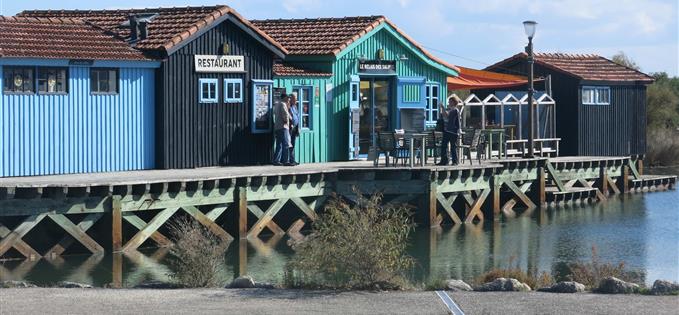 The superb Relais des Salines is close to the saltmaking ponds
The superb Relais des Salines is close to the saltmaking ponds 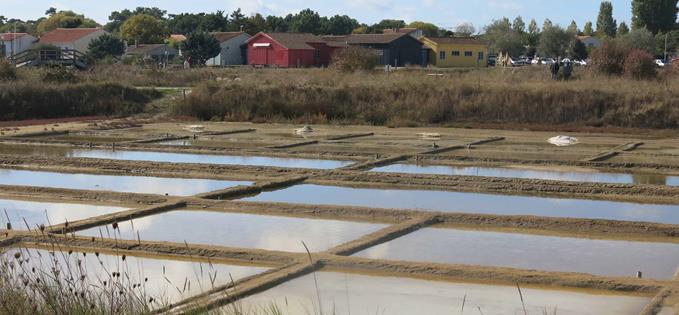
The tour was quite exhaustive, so we we ready for lunch at the Relais des Salines. Sitting prettily on the dock with expansive views, it gives no indication from the otuside of the quality off Michelin-mentioned food on offer. Gaze the exquisite fish and mushroom stew below. It was amazing as it looks, the best dish of the trip. And that’s saying something.
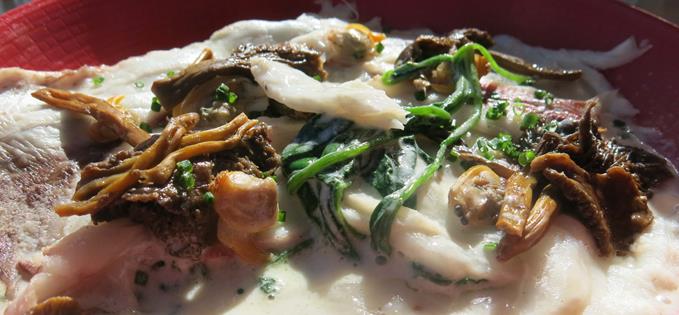
Factfile
Neil Sowerby stayed at the Hotel Champlain/France Angleterre, 30 rue Rambaud, La Rochelle and Le Trident Thyrsé, 66 Boulevard Frédéric Garnier, 17200 Royan.
He flew from Manchester to Nantes with www.flybe.com who run a regular service four times a week. Rochelle is a 2 hour drive from Nantes to la Rochelle; the same airline also flies directly to La Rochelle. He parked at Manchester Airport. For full details of parking options there visit this link.
For tourism information on La Charente-Maritime visit this link.
 Powered by Wakelet
Powered by Wakelet



